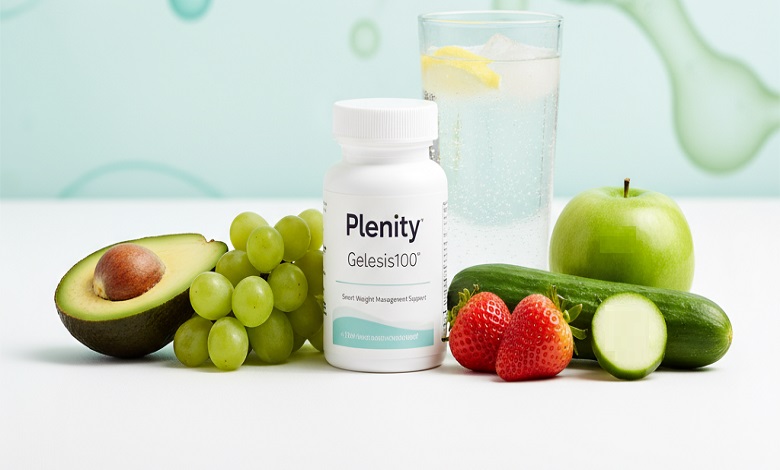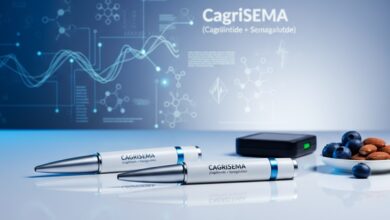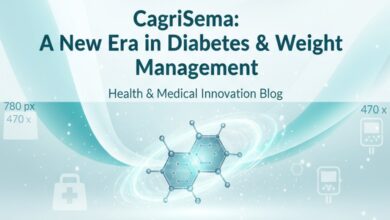What Is Plenity (Gelesis100)?

Plenity, also known by its research name Gelesis100, is not a traditional medication. Instead, it’s an FDA-cleared ingested medical device designed to help with weight management in adults with a BMI between 25 and 40 kg/m², when used alongside diet and exercise. Forbes+3FDA Access Data+3Ro+3
It consists of capsules containing superabsorbent hydrogel particles made from cellulose and citric acid. Once you take them with water, these particles expand in your stomach and small intestine, occupying space and creating a sensation of fullness — so you naturally eat less. Medical Letter+3Ro+3Ro+3
Because Plenity works mechanically (not absorbed into your bloodstream), it is classified as a nonsystemic device rather than a drug. FDA Access Data+2Ro+2
⚙️ How Does It Work? (Mechanism & Use)
- You take 3 capsules (a “pod”) before lunch and again before dinner, with 16 ounces (2 cups) of water. Forbes+3Ro+3PMC+3
- After 20–30 minutes, the capsules dissolve, releasing hydrogel particles that absorb water and swell up — expanding into a gel-like matrix. Medical Letter+3FDA Access Data+3Ro+3
- That gel mixes with your food, increasing the volume in the digestive tract and slowing hunger signals. Medical Letter+3Ro+3PMC+3
- As the gel moves through the intestines, it gradually degrades and is eliminated naturally (no absorption into bloodstream). PMC+3Ro+3PMC+3
Because it relies on water to function, you must drink enough water for it to expand properly. Skipping water or being dehydrated may reduce its effect. Ro+2GoodRx+2
📊 Clinical Evidence: How Effective Is It?
In the pivotal GLOW trial, a double-blind, randomized, placebo-controlled study, Plenity was tested over 24 weeks in overweight and obese individuals, combined with diet and exercise. Ro+3FDA Access Data+3PMC+3
Key results included:
- Participants using Plenity lost on average ~6.4% of their body weight vs. ~4.4% for placebo + lifestyle. PMC+3Ro+3Forbes+3
- About 59% of those on Plenity achieved at least 5% weight loss, and 27% got at least 10% reduction. Ro+2Forbes+2
- People with pre-diabetes or mild T2D had better odds of reaching ≥10% loss. FDA Access Data+3Ro+3Forbes+3
On safety: Plenity’s side effect profile was mild, with gastrointestinal symptoms (bloating, diarrhea, flatulence) being the most common. These rates were comparable to placebo in many cases. Ro+3GoodRx+3PMC+3
Long-term data (beyond 24–30 weeks) are still limited, so ongoing monitoring is important. PMC+2PMC+2
✅ Pros, ⚠️ Cons & Ideal Users
✅ Advantages
- Acts without systemic absorption — fewer risks of drug interactions
- Helps with portion control by realistic fullness, rather than appetite suppression
- Typically well tolerated; side effects are mostly mild GI issues
- No time limitation (unlike many medications) if tolerated and useful
- Works in combination with diet & exercise, not a standalone magic pill
⚠️ Limitations / Risks
- Requires strict timing and water intake — missing that can reduce effectiveness
- Side effects like bloating, loose stools, gas, constipation are possible. GoodRx+2Forbes+2
- Not suitable for people with GI disorders (ulcers, strictures, Crohn’s, prior surgeries)
- Not for use during pregnancy or in people allergic to its components (cellulose, citric acid, gelatin). FDA Access Data+2PMC+2
- Modest weight loss gains — not as dramatic as some newer medications
- Insurance coverage is limited; many users pay out of pocket. Forbes+1
Who might benefit most?
- Adults with overweight or mild obesity (BMI 25-40) who want a device-based weight aid
- Those who prefer a non-pharmaceutical, “natural-acting” option
- Users committed to dietary control and lifestyle changes
- People wanting fewer systemic side effects or drug interactions
🔍 How Plenity Compares to Weight Loss Drugs & Devices
In the modern 2025 weight-loss landscape, options include GLP-1 drugs (e.g., semaglutide), bariatric surgery, other appetite suppressants, and behavioral tools.
- Vs. GLP-1 drugs (Wegovy, Ozempic): These often produce larger weight losses, but with hormone effects, injection mode, and side effects. Plenity is oral, mechanical, and gentler — but results are usually more modest.
- Vs. appetite suppressants / meds: Many have systemic effects on neurotransmitters, potential for interactions, or side effects (heart rate changes, mood, GI). Plenity is less invasive by comparison.
- Vs. other “fillers” or fiber supplements: Some non-prescription products promise fullness by fiber, but often lack robust clinical trials. Plenity has clinical evidence and regulatory clearance.
- Vs. surgical or endoscopic devices: More invasive methods (e.g. gastric balloons, bariatric surgery) yield greater weight loss but carry more risk, cost, and recovery. Plenity is a low-risk alternative for moderate cases.
In effect, Plenity sits in the “middle ground” — safer than invasive methods, gentler than many drugs, but not as powerful as the strongest options.
📦 Subscription, Cost & Access Trends 2025
One of the latest trends: prescription weight loss aids offered via subscription platforms. Plenity is often available via telemedicine companies (e.g. Ro), where users get prescriptions, refills, and follow-up support online. Ro+2Forbes+2
For example, Plenity’s subscription (4-week supply) costs around $98 USD in the U.S.—roughly $1.75 per meal (two doses per day). Forbes
Some health platforms bundle it into weight management packages: dietary coaching, app tracking, tele-nutritionist support, periodic lab tests, and refill scheduling. This combination model is gaining popularity as people seek holistic solutions.
In markets outside the U.S., access might be more limited — prescription rules, import constraints, and regulatory differences can affect availability.
🧠 Recommendations & Best Practices
- Always start under supervision of a qualified healthcare provider, especially if you take other medications, have GI or metabolic conditions, or have undergone GI surgery.
- Stay hydrated — follow the strict water dosing rules for each capsule dose.
- Pair it with a calorie-controlled diet and regular exercise — Plenity is a tool, not a magic wand.
- Monitor for GI side effects. If persistent or severe, report to your clinician.
- Use support tools — apps, nutrition counseling, behavioral coaching — to maximize success.
- If one subscription service offers bundle plans with lab tests and diet support, that may be more cost-effective long-term.
✨ Final Thoughts: Is Plenity Worth Considering in 2025?
Plenity (Gelesis100) offers a clever, non-drug approach to weight management — leveraging a physical gel mechanism to boost fullness. It’s ideal for those who prefer a low-risk, gentle intervention over more aggressive pharmaceuticals.
However, its effectiveness is modest compared to high-potency medications, and it requires consistent use, hydration, and lifestyle discipline. Also, access and cost may be limiting factors in many countries.
Still, in the evolving weight-loss ecosystem of 2025 — where people seek safer, more integrated, subscription-friendly solutions — Plenity fits well into a tier of “middle” options: more effective than plain diet/fiber tricks, but gentler than hormone-based drugs.



